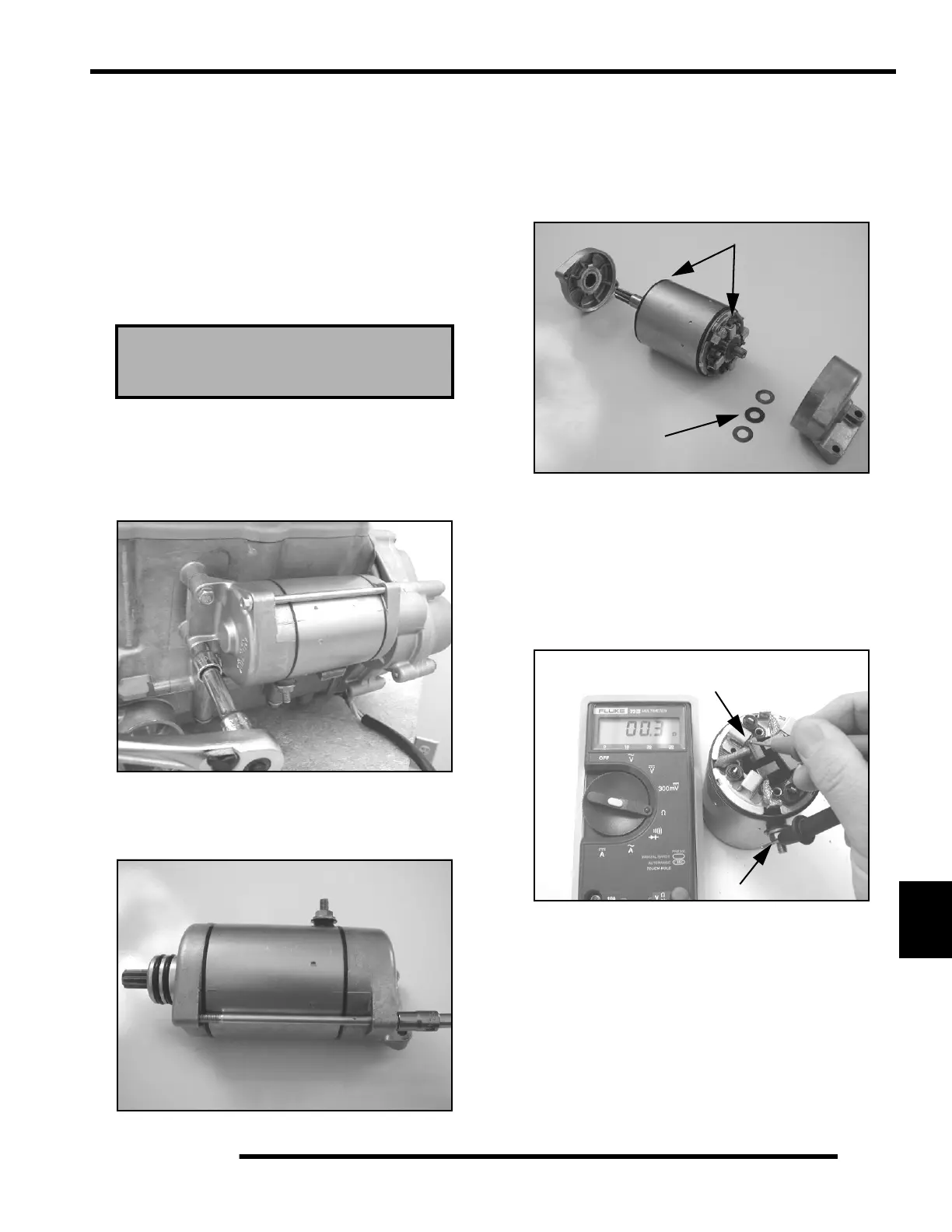10.29
ELECTRICAL
10
Voltage Drop Test
The Voltage Drop Test is used to test for bad connections. When
performing the test, you are testing the amount of voltage drop
through the connection. A poor or corroded connection will
appear as a high voltage reading. Voltage shown on the meter
when testing connections should not exceed .1 VDC per
connection or component.
To perform the test, place the meter on DC volts and place the
meter leads across the connection to be tested. Refer to the
voltage drop tests on the starter system in this chapter.
Starter Motor Removal / Disassembly
NOTE: Use electrical contact cleaner to clean starter
motor parts. Some solvents may leave a residue or
damage internal parts and insulation.
1. Remove the starter from the engine.
2. Remove the two bolts, washers, and sealing O-Rings.
Inspect O-Rings and replace if damaged.
NOTE: Note the alignment marks on both ends of
the starter motor casing. These marks must align
during reassembly.
3. Remove the front bracket assembly and the rear bracket
assembly. Remove the shims from the armature shaft and
inspect the O-rings located on the armature housing.
NOTE: The shims will be replaced during
reassembly.
Brush Inspection / Replacement
1. Measure resistance between starter input terminal and
insulated brushes. The reading should be .3 ohms or less.
Remember to subtract meter lead resistance.
Voltage should not exceed
.1 DC volts per connection

